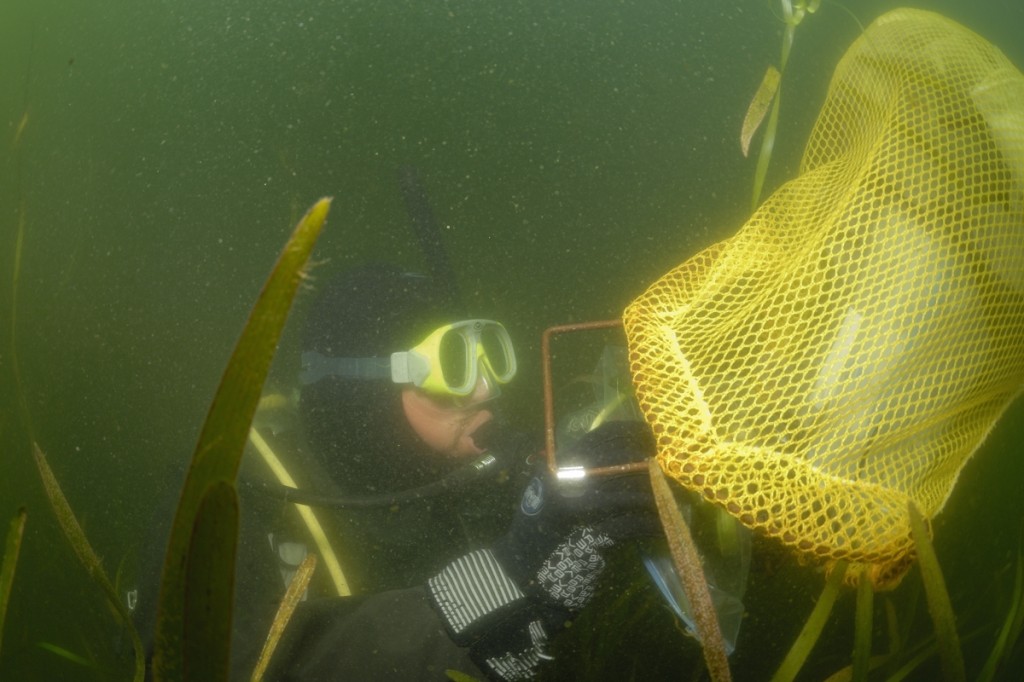
Early at 6:00 a.m., the boat with Patrica M. Halpin and her students into the fog-shrouded bay off Bamfield. The goal is a relatively large mussel bank in the intertidal zone, which is to be surveyed in detail. Patti Halpin and Carlos Robles are researching the "intertidal zone" habitat in various projects. Once again, dataloggers were sunk in the sea the day before. As the tide has a somewhat stronger effect on the dataloggers here, they are somewhat larger than the eelgrass dataloggers. In this case, salinity and temperature are recorded over a period of one year. "The salinity is currently just under 19, which is a good value. If the salinity decreases and falls below the 15 mark, it becomes critical for some animals. You can do a simple test with starfish. "If you turn them on their backs, they can no longer manage to turn over on their own," Patti explains to me.
In principle, a large part of research consists of collecting data. In this case, it's quite a colorful affair. Yellow and red spray paint is used to mark interesting areas, such as spots where there are no mussels. A number of orange golf balls and a yellow string are also placed, adding scale and texture to the final photos. In this way, changes in the intertidal zone can be determined. Putting these in relation to the many data measured here can ultimately provide clues as to what influences the intertidal zone and what factors are endangering it. The global rise in temperature, which also causes more severe and frequent storms, is also a danger in this case. Stronger storms with more rain and less forest to compensate for it also brings greater freshwater input in many areas.
There are tidal zones on all coasts worldwide. Sometimes more, sometimes less pronounced. Sometimes unique, like our Wadden Sea. Unfortunately, this habitat has disappeared completely in some areas due to increasing coastal development. Here off the coast of British Columbia, the extent of the intertidal zone at a tide of three meters is enormously pronounced and diverse. Perfect conditions for the researchers. The pools left over from the last high tide are teeming with life. The green anemones can survive until the next high tide even without these pools. By closing up, they keep a certain supply of water.
At lunchtime I met Ross, who was chiseling the eelgrass chip out of the brick. Later I accompanied the eelgrass team again, this time collecting the eelgrass itself along a survey tape in 13 degree Celsius water and two meters of visibility for closer examination.
But the fog from the morning had disappeared. Since then we have had a cloudless sky. In the meantime I have arrived in Port Alberni, where tomorrow I will be waiting for Peter from "Rendezvous Diving" meet. Then it's off to the Broken Island Group for a few days of diving.
http://reinis-blue-box.blogspot.de/















